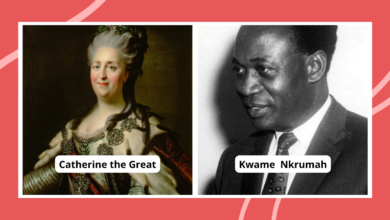Executive Orders on Education

On January 29, 2025 President Donald Trump released two executive orders that focus on education. One, Ending Radical Indoctrination in K-12 Schooling and the other, Expanding Educational Freedom and Opportunity for Families.
What do the executive orders include?
The Ending Radical Indoctrination in K-12 Schooling executive order suggests that schools have indoctrinated children in “radical, anti-American ideologies” while blocking parental oversight. It asks for a recommendation about how federally funded schools can “end indoctrination” or “discriminatory equity ideology” or teaching an ideology that treats any group as preferred or disfavored. This includes teachers or schools that include “gender ideology or critical race theory” in the classroom.
Second, the Expanding Educational Freedom and Opportunity for Families executive order suggests that many children do not thrive in their “government-run K-12 school” and requires the Secretary of Education and Department of Health and Human Services to provide guidance on how states can use federal funding to expand K-12 choice initiatives, including redirecting federal money to allow parents to use federal funds to send their child to a private or faith-based school.

Taken together, says Professor Jonathan Collins, assistant professor and co-director of the Politics and Education Program at Teacher’s College at Columbia University and associate director of the Center for Educational Equity, these executive orders envision a school system that is extremely accountable to parents, but without any responsibility placed on them. It eliminates the idea of education as a shared system where students are learning in diverse classrooms, with classmates who have different backgrounds, experiences, and perspectives. In that way, these executive orders are in line with the other anti-Diversity Equity and Inclusion (D.E.I.) policies that the Trump administration has produced since inauguration day.
What should teachers know and do?
The impact of the executive orders have yet to be fully realized, so for now, Collins recommends being aware and informed, and focusing on what teachers do best.
1. What happens next depends on enforcement.
The actual impact of the educational indoctrination order depends on how it is enforced. “Executive orders change the policy precedent,” says Collins, which “gives federal agencies a green light to monitor and enforce.” In this case, if a parent feels that a teacher is in violation of the order and file a lawsuit or a claim, then the federal government may respond by potentially taking federal funding away from the school.
2. Relationships and communication are key
The relationship with students and families is particularly important now, says Collins. Make it clear what you are teaching and why, and how it aligns with the district curriculum that is already in place. These executive orders, particularly the threat of parents filing lawsuits that could remove federal funding may instill fear. So, this is the time to re-establish levels of trust, says Collins.
3. We know it’s hard, but don’t worry too much.
With curriculum decisions being made at the district level, there’s very little evidence of indoctrination actually embedded in teaching standards. Teachers are working in highly structured environments, so banning indoctrination is essentially “banning steak at a vegan restaurant,” says Collins.
4. Focus on the long game.
The Expanding Educational Freedom order has the potential to direct funding away from public schools in a dramatic way. After years of declining enrollment that has already stressed schools, if more parents choose to take federal funds to pay for private or faith-based schools, that could erode funding for public schools. And, fewer funds means fewer teachers, less support, and larger class sizes. This won’t happen overnight, so keeping the focus on what’s happening in your district and making the case for your public school is important.
5. Stay vocal and present
“This is an important time to remind our society that teachers are the most important professionals in our society,” says Collins. Both of these orders come after 20 years of diversity practices becoming more and more a part of education and other areas of society. It is possible that a reversal of DEI initiatives, like these, will help reinforce how important diversity really is. Until then, keep doing what you are doing–building relationships , working with students, and teaching.
Looking for more articles and resources like this? Be sure to subscribe to our newsletters.
Source link




